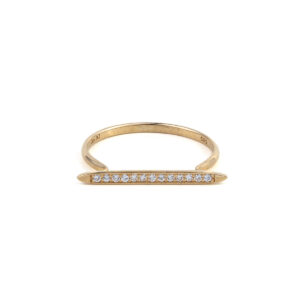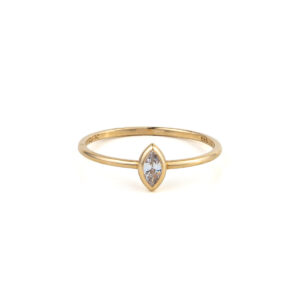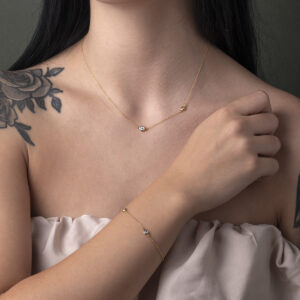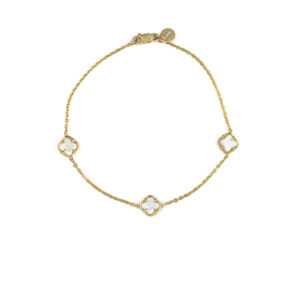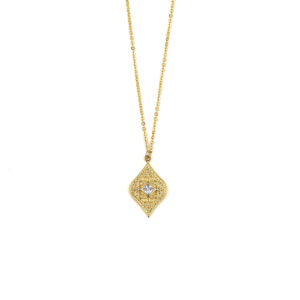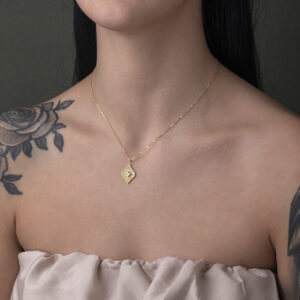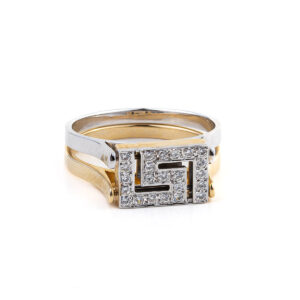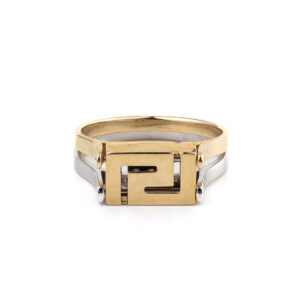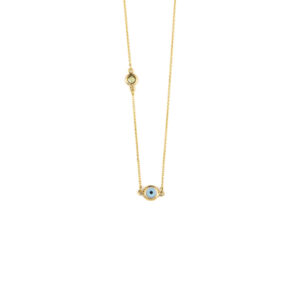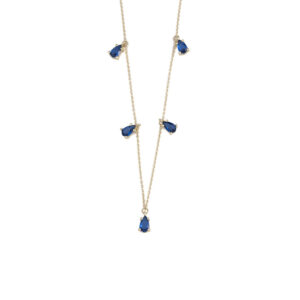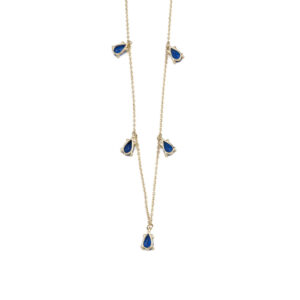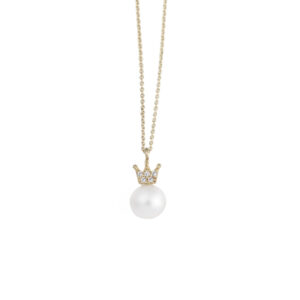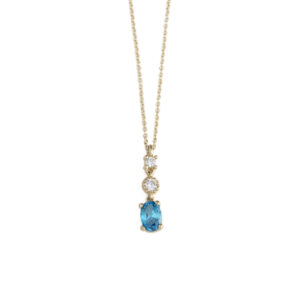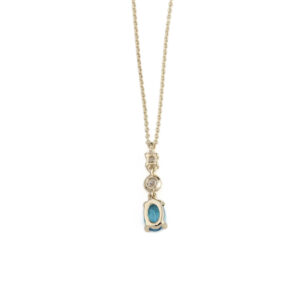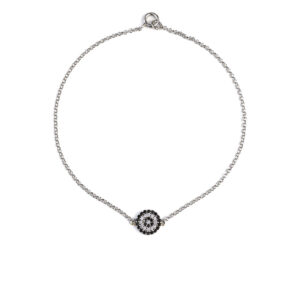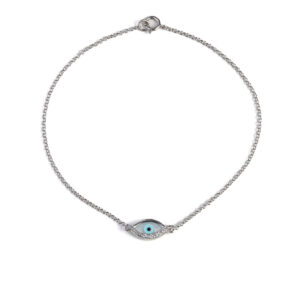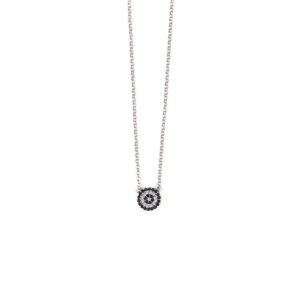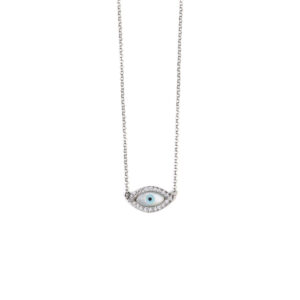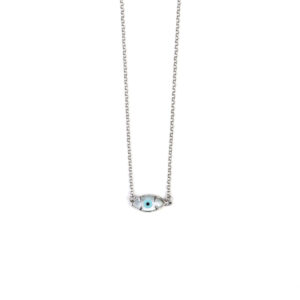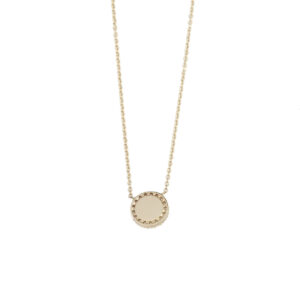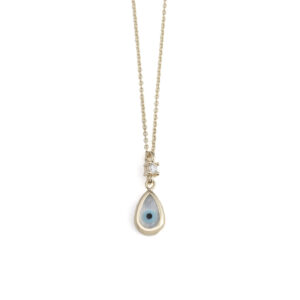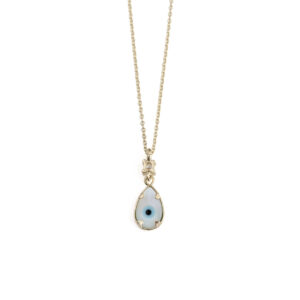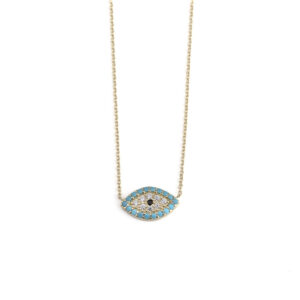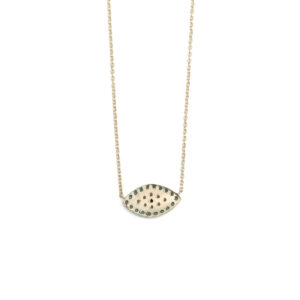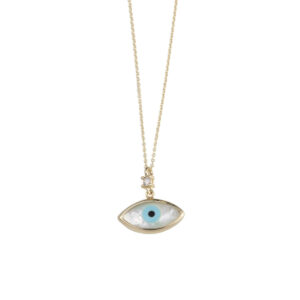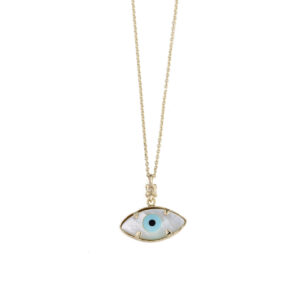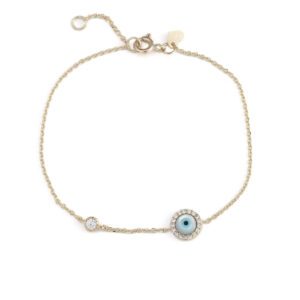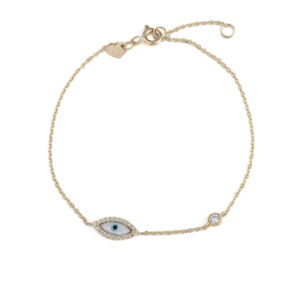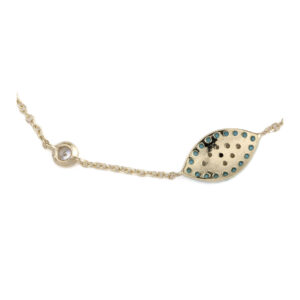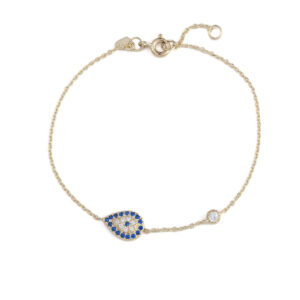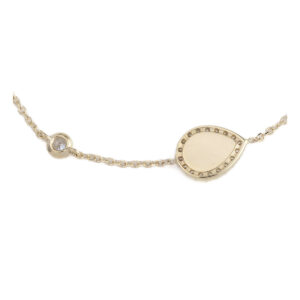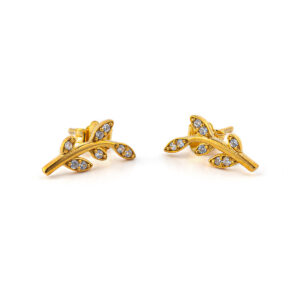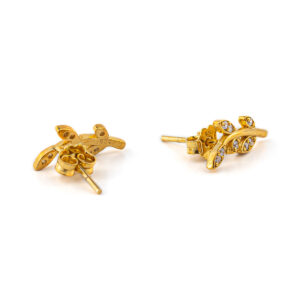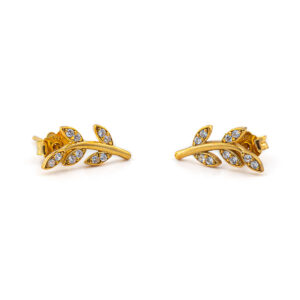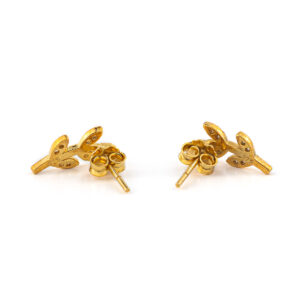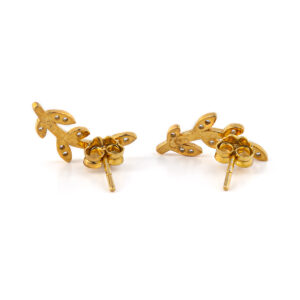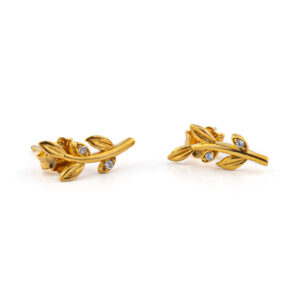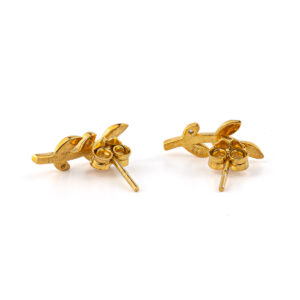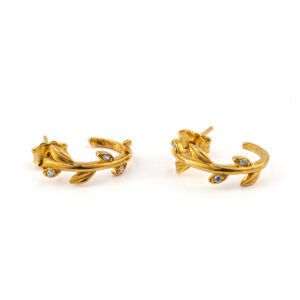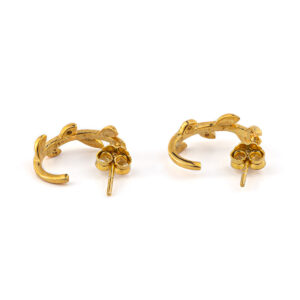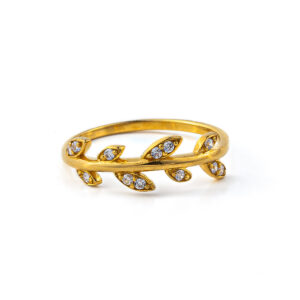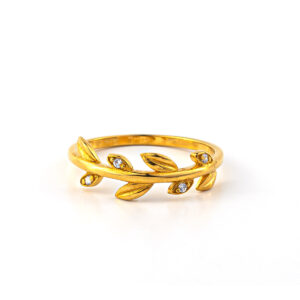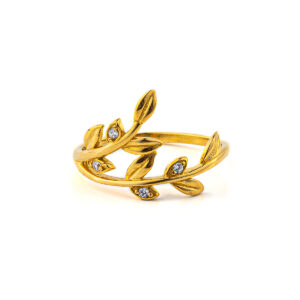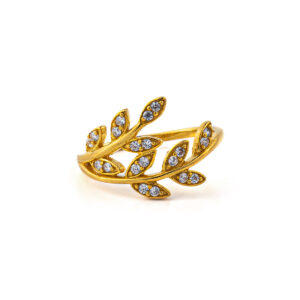14Κ Κίτρινο Χρυσό Δαχτυλίδι με Ζιργκόν
225,00€Κατασκευασμένο από Χρυσό 14Κ.
Χειροποίητο Ελληνικό κόσμημα.
Δαχτυλίδι Σταγόνα με Ζιργκόν – 14Κ Χρυσό
236,00€Κατασκευασμένο από Χρυσό 14Κ.
Χειροποίητο Ελληνικό κόσμημα.
Χρυσό 14Κ Μαίανδρος – Βραχιόλι
942,00€Φτιαγμένο από χρυσό 14Κ.
Χειροποίητο κόσμημα.
Meandros design is a decorative border constructed from a continuous line, shaped into a repeated motif. Such a design is also called the Greek fret or Greek key design, although these are modern designations. One the one hand, the name “meander” recalls the twisting and turning path of the Meander River in Asia Minor, and on the other hand, as Karl Kerenyi pointed out, “the meander is the figure of a labyrinth in linear form” the meaning is that these is no beginning and to end in some cases so it become the symbol of long life and eternity.
Βραχιόλι Χρυσό Κ14 με μάτι
195,00€Φτιαγμένο από χρυσό 14Κ.
Χειροποίητο κόσμημα.
The symbol and superstition of the evil eye is one of the strongest symbolic images in the world. The earliest known evidence for belief in the evil eye goes back to ancient Greece and Rome. It is supposed to wear off evil to anyone who wears it.
Βραχιόλι με τρία Τριφύλλια – 14Κ Χρυσό
Φτιαγμένο από χρυσό 14Κ.
Χειροποίητο κόσμημα.
Δαχτυλίδι με Μαίανδρο Διπλής Όψης με Ζιργκόν – 14Κ Χρυσό
Φτιαγμένο από χρυσό 14Κ.
Χειροποίητο κόσμημα.
Double Face Greek key Ring with Zircon – 14K Gold inspired by the ancient Greek design the Meander or Greek Key.
Meandros design is a decorative border constructed from a continuous line, shaped into a repeated motif. Such a design is also called the Greek fret or Greek key design, although these are modern designations. One the one hand, the name “meander” recalls the twisting and turning path of the Meander River in Asia Minor, and on the other hand, as Karl Kerenyi pointed out, “the meander is the figure of a labyrinth in linear form” the meaning is that these is no beginning and to end in some cases so it become the symbol of long life and eternity.
Handmade item.
Κολιέ με Μάτι Κυκλικό – 14Κ Χρυσό
642,00€Φτιαγμένο από χρυσό 14Κ.
Χειροποίητο κόσμημα.
The symbol and superstition of the evil eye is one of the strongest symbolic images in the world. The earliest known evidence for belief in the evil eye goes back to ancient Greece and Rome. It is supposed to wear off evil to anyone who wears it.
Κολιέ με Κρεμαστά Μπλε Ζιργκόν – Χρυσό 9Κ
285,00€Κατασκευασμένο από χρυσό 9Κ.
Χειροποίητο Ελληνικό κόσμημα.
Βραχιόλι Στρογγυλό Ματάκι και Ζιργκόν – Ασήμι 925
Βραχιόλι με μάτι κατασκευασμένο από Ασήμι 925.
Κολιέ με Μάτι και Ζιργκόν – Ασήμι 925
Κολιέ με μάτι κατασκευασμένο από Ασήμι 925.
Κολιέ Clover με Ζιργκόν – Ασήμι 925
Κολιέ με σταυρό από μαύρο όνυχα, κατασκευασμένο από ασήμι 925.
Κολιέ με Μάτι και Μπλε Ζιργκόν – 9Κ Χρυσό
210,00€Κολιέ με μάτι κατασκευασμένο από χρυσό 9 καρατίων.
Κολιέ με Μάτι και Τυρκουάζ Ζιργκόν – 9Κ Χρυσό
192,00€Κολιέ με μάτι κατασκευασμένο από χρυσό 9 καρατίων.
Κολιέ Στρογγυλό Μάτι – 9Κ Χρυσό και Ζιργκόν
252,00€Κολιέ με μάτι κατασκευασμένο από χρυσό 9 καρατίων.
Κολιέ Στρογγυλό Ματάκι – 9Κ Χρυσό και Ζιργκόν
195,00€Κολιέ με μάτι κατασκευασμένο από χρυσό 9 καρατίων.
Κολιέ Σταγόνα Ματάκι και Ζιργκόν – 9Κ Χρυσό
215,00€Κολιέ με μάτι κατασκευασμένο από χρυσό 9 καρατίων.
Βραχιόλι με Μάτι και Μπλε Ζιργκόν – 9Κ Χρυσό
178,00€Made of 9K yellow gold
Handmade in Greece
The symbol and superstition of the evil eye is one of the strongest symbolic images in the world. The earliest known evidence for belief in the evil eye goes back to ancient Greece and Rome. It is supposed to wear off evil to anyone who wears it.
Βραχιόλι Στρογγυλό Ματάκι – 9Κ Χρυσό και Ζιργκόν
170,00€Made of 9K yellow gold
Handmade in Greece
The symbol and superstition of the evil eye is one of the strongest symbolic images in the world. The earliest known evidence for belief in the evil eye goes back to ancient Greece and Rome. It is supposed to wear off evil to anyone who wears it.
Βραχιόλι Ματάκι – 9Κ Χρυσό και Ζιργκόν
178,00€Made of 9K yellow gold
Handmade in Greece
The symbol and superstition of the evil eye is one of the strongest symbolic images in the world. The earliest known evidence for belief in the evil eye goes back to ancient Greece and Rome. It is supposed to wear off evil to anyone who wears it.
Βραχιόλι Μαύρο Ματάκι – 9Κ Χρυσό
178,00€Made of 9K yellow gold
Handmade in Greece
The symbol and superstition of the evil eye is one of the strongest symbolic images in the world. The earliest known evidence for belief in the evil eye goes back to ancient Greece and Rome. It is supposed to wear off evil to anyone who wears it.
Βραχιόλι με Μάτι και Τυρκουάζ Ζιργκόν – 9Κ Χρυσό
178,00€Made of 9K yellow gold
Handmade in Greece
The symbol and superstition of the evil eye is one of the strongest symbolic images in the world. The earliest known evidence for belief in the evil eye goes back to ancient Greece and Rome. It is supposed to wear off evil to anyone who wears it.
Βραχιόλι Μάτι με Τυρκουάζ Ζιργκόν – 9Κ Χρυσό
178,00€Made of 9K yellow gold
Handmade in Greece
The symbol and superstition of the evil eye is one of the strongest symbolic images in the world. The earliest known evidence for belief in the evil eye goes back to ancient Greece and Rome. It is supposed to wear off evil to anyone who wears it.
Βραχιόλι Μάτι με Μπλε Ζιργκόν – 9Κ Χρυσό
178,00€Made of 9K yellow gold
Handmade in Greece
The symbol and superstition of the evil eye is one of the strongest symbolic images in the world. The earliest known evidence for belief in the evil eye goes back to ancient Greece and Rome. It is supposed to wear off evil to anyone who wears it.
Βραχιόλι Σταγόνα Ματάκι και Ζιργκόν – 9Κ Χρυσό
189,00€Βραχιόλι με μάτι κατασκευασμένο από χρυσό 9 καρατίων.
Σκουλαρίκια Κλαδί – 14Κ Χρυσό με Ζιργκόν
428,00€Earrings inspired by the olive leaf symbol.
Made of 14k gold with zircon.
The olive wreath also known as kotinos was the prize for the winner at the ancient Olympic Games. It was an olive branch, of the wild- olive tree that grew at Olympia,intertwined to form a circle or a horse-shoe. According to Pausanias it was introduced by Heracles as a prize for the running race winner to honour his father Zeus. In the ancient Olympic Games there were no gold, silver, or bronze medals. There was only one winner per event, crowned with an olive wreath made of wild-olive leaves from a sacred tree near the temple of Zeus at Olympia. Olive wreaths were given out during the 2004 Summer Olympics in Athens in honor of the ancient tradition, because the games were being held in Greece.
Σκουλαρίκια Κλαδί – 14Κ Χρυσό με Ζιργκόν
568,00€Earrings inspired by the olive leaf symbol.
Made of 14k gold with zircon.
The olive wreath also known as kotinos was the prize for the winner at the ancient Olympic Games. It was an olive branch, of the wild- olive tree that grew at Olympia,intertwined to form a circle or a horse-shoe. According to Pausanias it was introduced by Heracles as a prize for the running race winner to honour his father Zeus. In the ancient Olympic Games there were no gold, silver, or bronze medals. There was only one winner per event, crowned with an olive wreath made of wild-olive leaves from a sacred tree near the temple of Zeus at Olympia. Olive wreaths were given out during the 2004 Summer Olympics in Athens in honor of the ancient tradition, because the games were being held in Greece.
Σκουλαρίκια Κλαδί – 14Κ Χρυσό με Ζιργκόν
514,00€Earrings inspired by the olive leaf symbol.
Made of 14k gold with zircon.
The olive wreath also known as kotinos was the prize for the winner at the ancient Olympic Games. It was an olive branch, of the wild- olive tree that grew at Olympia,intertwined to form a circle or a horse-shoe. According to Pausanias it was introduced by Heracles as a prize for the running race winner to honour his father Zeus. In the ancient Olympic Games there were no gold, silver, or bronze medals. There was only one winner per event, crowned with an olive wreath made of wild-olive leaves from a sacred tree near the temple of Zeus at Olympia. Olive wreaths were given out during the 2004 Summer Olympics in Athens in honor of the ancient tradition, because the games were being held in Greece.
Σκουλαρίκια Κλαδί – 14Κ Χρυσό με Ζιργκόν
428,00€Earrings inspired by the olive leaf symbol.
Made of 14k gold with zircon.
The olive wreath also known as kotinos was the prize for the winner at the ancient Olympic Games. It was an olive branch, of the wild- olive tree that grew at Olympia,intertwined to form a circle or a horse-shoe. According to Pausanias it was introduced by Heracles as a prize for the running race winner to honour his father Zeus. In the ancient Olympic Games there were no gold, silver, or bronze medals. There was only one winner per event, crowned with an olive wreath made of wild-olive leaves from a sacred tree near the temple of Zeus at Olympia. Olive wreaths were given out during the 2004 Summer Olympics in Athens in honor of the ancient tradition, because the games were being held in Greece.
Σκουλαρίκια Κλαδί – 14Κ Χρυσό με Ζιργκόν
620,00€Earrings inspired by the olive leaf symbol.
Made of 14k gold with zircon.
The olive wreath also known as kotinos was the prize for the winner at the ancient Olympic Games. It was an olive branch, of the wild- olive tree that grew at Olympia,intertwined to form a circle or a horse-shoe. According to Pausanias it was introduced by Heracles as a prize for the running race winner to honour his father Zeus. In the ancient Olympic Games there were no gold, silver, or bronze medals. There was only one winner per event, crowned with an olive wreath made of wild-olive leaves from a sacred tree near the temple of Zeus at Olympia. Olive wreaths were given out during the 2004 Summer Olympics in Athens in honor of the ancient tradition, because the games were being held in Greece.
Δαχτυλίδι Κλαδί – 14Κ Χρυσό με Ζιργκόν
528,00€Ring inspired by the olive leaf symbol.
Made of 14k gold with zircon.
The olive wreath also known as kotinos was the prize for the winner at the ancient Olympic Games. It was an olive branch, of the wild- olive tree that grew at Olympia,intertwined to form a circle or a horse-shoe. According to Pausanias it was introduced by Heracles as a prize for the running race winner to honour his father Zeus. In the ancient Olympic Games there were no gold, silver, or bronze medals. There was only one winner per event, crowned with an olive wreath made of wild-olive leaves from a sacred tree near the temple of Zeus at Olympia. Olive wreaths were given out during the 2004 Summer Olympics in Athens in honor of the ancient tradition, because the games were being held in Greece.
Δαχτυλίδι Κλαδί – 14Κ Χρυσό με Ζιργκόν
582,00€Ring inspired by the olive leaf symbol.
Made of 14k gold with zircon.
The olive wreath also known as kotinos was the prize for the winner at the ancient Olympic Games. It was an olive branch, of the wild- olive tree that grew at Olympia,intertwined to form a circle or a horse-shoe. According to Pausanias it was introduced by Heracles as a prize for the running race winner to honour his father Zeus. In the ancient Olympic Games there were no gold, silver, or bronze medals. There was only one winner per event, crowned with an olive wreath made of wild-olive leaves from a sacred tree near the temple of Zeus at Olympia. Olive wreaths were given out during the 2004 Summer Olympics in Athens in honor of the ancient tradition, because the games were being held in Greece.
Δαχτυλίδι Κλαδί – 14Κ Χρυσό με Ζιργκόν
418,00€Ring inspired by the olive leaf symbol.
Made of 14k gold with zircon.
The olive wreath also known as kotinos was the prize for the winner at the ancient Olympic Games. It was an olive branch, of the wild- olive tree that grew at Olympia,intertwined to form a circle or a horse-shoe. According to Pausanias it was introduced by Heracles as a prize for the running race winner to honour his father Zeus. In the ancient Olympic Games there were no gold, silver, or bronze medals. There was only one winner per event, crowned with an olive wreath made of wild-olive leaves from a sacred tree near the temple of Zeus at Olympia. Olive wreaths were given out during the 2004 Summer Olympics in Athens in honor of the ancient tradition, because the games were being held in Greece.
Δαχτυλίδι Κλαδί – 14Κ Χρυσό με Ζιργκόν
418,00€Ring inspired by the olive leaf symbol.
Made of 14k gold with zircon.
The olive wreath also known as kotinos was the prize for the winner at the ancient Olympic Games. It was an olive branch, of the wild- olive tree that grew at Olympia,intertwined to form a circle or a horse-shoe. According to Pausanias it was introduced by Heracles as a prize for the running race winner to honour his father Zeus. In the ancient Olympic Games there were no gold, silver, or bronze medals. There was only one winner per event, crowned with an olive wreath made of wild-olive leaves from a sacred tree near the temple of Zeus at Olympia. Olive wreaths were given out during the 2004 Summer Olympics in Athens in honor of the ancient tradition, because the games were being held in Greece.
Δαχτυλίδι Κλαδί – 14Κ Χρυσό με Ζιργκόν
494,00€Ring inspired by the olive leaf symbol.
Made of 14k gold with zircon.
The olive wreath also known as kotinos was the prize for the winner at the ancient Olympic Games. It was an olive branch, of the wild- olive tree that grew at Olympia,intertwined to form a circle or a horse-shoe. According to Pausanias it was introduced by Heracles as a prize for the running race winner to honour his father Zeus. In the ancient Olympic Games there were no gold, silver, or bronze medals. There was only one winner per event, crowned with an olive wreath made of wild-olive leaves from a sacred tree near the temple of Zeus at Olympia. Olive wreaths were given out during the 2004 Summer Olympics in Athens in honor of the ancient tradition, because the games were being held in Greece.
Δαχτυλίδι Κλαδί – 14Κ Χρυσό με Ζιργκόν
578,00€Ring inspired by the olive leaf symbol.
Made of 14k gold with zircon.
The olive wreath also known as kotinos was the prize for the winner at the ancient Olympic Games. It was an olive branch, of the wild- olive tree that grew at Olympia,intertwined to form a circle or a horse-shoe. According to Pausanias it was introduced by Heracles as a prize for the running race winner to honour his father Zeus. In the ancient Olympic Games there were no gold, silver, or bronze medals. There was only one winner per event, crowned with an olive wreath made of wild-olive leaves from a sacred tree near the temple of Zeus at Olympia. Olive wreaths were given out during the 2004 Summer Olympics in Athens in honor of the ancient tradition, because the games were being held in Greece.

